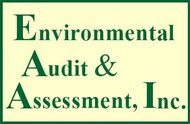Soil Classification: Understand Your Soil
Soil is one of the most critical factors in agriculture. It rules out weeds, and other harmful plants, helps maintain soil pH balance, moderates the temperature inside your garden bed, and accounts for about half of your country's freshwater table. But even though we know a lot about soil, we don't always understand everything about it. This article will explain the different types of soil, their characteristics, and their roles in agriculture.
Why Is Soil Significant For Plant Growth?
Besides being one of the most critical factors in agriculture, soil is also a valuable asset to plants' growth. It regulates soil fertility and keeps areas from becoming too dry. If plants cannot grow in soil, they will go to another growing medium or be forced to wait for less attractive biomass to grow independently. Soil is indeed a critical component for valuable crops like vegetables and flowers. Without rich soil, plants cannot produce enough biomass to sustain themselves.
Types of Soil For Your Garden
There are two types of soil: organic and inorganic.
Organic soil is one in which most of the nutrients are organic matter, such as leaves, stems, and other organic matter, while inorganic soil is one in which almost all of the nutrients are in stone or rock.
Inorganic soil is often used for agriculture where nutrients are more needed, but it is impossible to obtain in the absence of adequate resources. On the other hand, organic soils are maintained naturally by the environment and are easily obtainable when land needs repairs or reclamation.
Characteristics of Soil
Soil texture
The texture or consistency of your soil is ascertained by a number of factors; the most important one is the type of fertilizers you have applied.
Soil Organic Matter
The amount of soil organic matter is determined by the amount of fertilizers applied. Applying too little organic matter will lead to poor soil, while too much organic matter can contribute to poor plant growth.
Potency
The sandy or nearly-sandy soils of the Great Plains are ideal for growing vegetables like tomatoes. However, other soils in the region provide a more suitable environment for beans, lettuce, and other tropical vegetables.
There are many types of soils. From sandy to well-vegetative and completely saturated, many different textures, opacities, and other characteristics determine good or bad soil for your garden. It depends on you to pick the right soil for the type of crop or plant you need to grow.
The Bottom Line
Soil is an essential factor in agriculture. It regulates soil fertility and keeps areas from becoming too dry. Soil is a "source of nourishment" for plants. It is what gives them water, nutrients, and energy. In the absence of rich soil, plants are unable to produce adequate biomass for their survival. The best soils for your garden provide the right amount of nourishment for your plants.
Soil management is key to all aspects of plant growth and is, therefore, worth learning about. Knowing the factors contributing to good or bad soil performance will allow you to make informed choices when choosing the right soil type for your garden.
